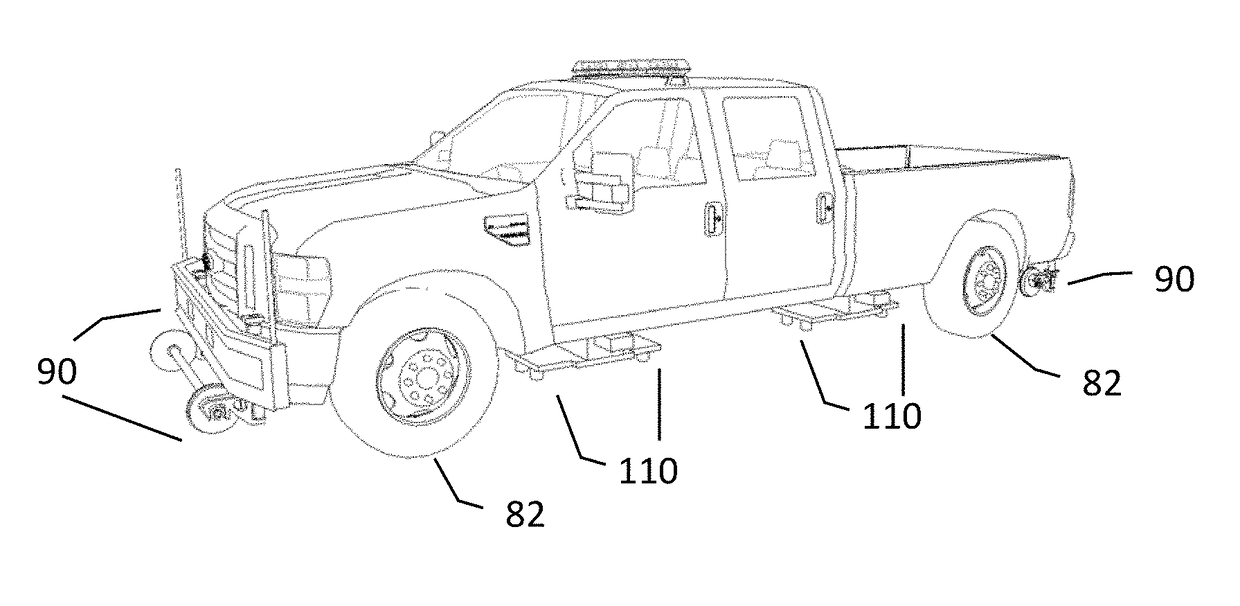Automated track inspection system
a track inspection and automatic technology, applied in the field of track inspection, can solve the problems of replicating the load of a train, rolling of the rails, and other geometric phenomena, and achieve the effects of avoiding risks, reducing the interruption of revenue rail operations, and increasing the frequency of loaded gauge measurements
- Summary
- Abstract
- Description
- Claims
- Application Information
AI Technical Summary
Benefits of technology
Problems solved by technology
Method used
Image
Examples
Embodiment Construction
[0031]In the following detailed description, reference is made to the accompanying drawings which form a part hereof, and in which are shown, by way of illustration, specific embodiments which may be practiced. It is to be understood that other embodiments may be used, and structural changes may be made without departing from the scope of this disclosure.
Operation
[0032]Referring to FIG. 1, vehicle 10 is configured for operation on conventional railroad track system 20. Conventional railroad track system 20 generally includes first rail 22 and second rail 24 supported in a spaced relationship. Vehicle 10, in this embodiment, is a robotic, self-propelled vehicle. Although depicted as a specific configuration, the concepts described herein are not limited to only such a configuration and the concepts and teachings may be applied to other configurations such as an outrigger configured vehicle, as well as various other vehicles such as robotic vehicles, hi-rail trucks, trains, cars, loco...
PUM
 Login to View More
Login to View More Abstract
Description
Claims
Application Information
 Login to View More
Login to View More - R&D
- Intellectual Property
- Life Sciences
- Materials
- Tech Scout
- Unparalleled Data Quality
- Higher Quality Content
- 60% Fewer Hallucinations
Browse by: Latest US Patents, China's latest patents, Technical Efficacy Thesaurus, Application Domain, Technology Topic, Popular Technical Reports.
© 2025 PatSnap. All rights reserved.Legal|Privacy policy|Modern Slavery Act Transparency Statement|Sitemap|About US| Contact US: help@patsnap.com



